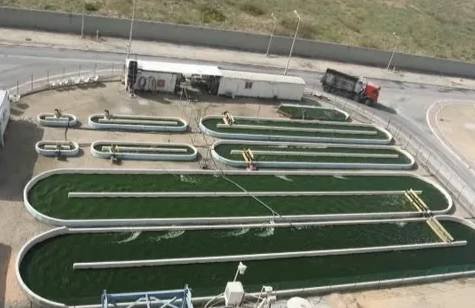Integrated Agriculture Businesses: A Sustainable Farming Model with Spirulina Farming
Integrated agriculture businesses are revolutionizing the farming landscape by combining multiple agricultural practices into a single, interconnected system. These businesses maximize resource efficiency by integrating crop production, livestock farming, aquaculture, and renewable energy sources like solar power. An emerging component of this model is spirulina farming, which offers a natural way to capture carbon while producing a valuable, nutrient-dense product. Together, these elements form a holistic, sustainable approach that enhances both environmental and economic outcomes.

What Is Integrated Agriculture?
Integrated agriculture refers to a farming system where various agricultural activities are strategically combined to create a mutually beneficial cycle. The outputs of one process become inputs for another, reducing waste and improving resource efficiency. For example, livestock waste can be used as fertilizer for crops, while crop residues can be fed to animals or used for bioenergy production.
The goal of integrated agriculture is to create a closed-loop system that enhances productivity, reduces environmental impact, and promotes sustainability.
Key Components of Integrated Agriculture Businesses
- Crop and Livestock Integration: Crop and livestock farming are combined, where livestock waste serves as organic fertilizer for crops, reducing the need for synthetic inputs. In turn, crops provide feed for livestock, ensuring efficient use of resources.
- Aquaculture and Agriculture Integration: Integrated aquaculture systems like aquaponics pair fish farming with crop production. Fish waste provides nutrients for plants, while plants help purify the water for the fish, creating a balanced, sustainable system with minimal waste.
- Renewable Energy Integration: Solar power, & wind energy derived from agricultural residues are integrated into farm operations, providing a clean, reliable energy source. Solar-powered farms, for instance, use photovoltaic panels to generate electricity for irrigation, heating, and cooling systems, significantly reducing operational costs.
- Spirulina Farming: Spirulina, a blue-green algae, is an eco-friendly addition to integrated agriculture. It captures carbon dioxide during photosynthesis, acting as a natural carbon sink. Spirulina can also be grown in solar-powered facilities, using minimal land and water, while producing a high-protein food source for human consumption and livestock feed.
Benefits of Integrated Agriculture Businesses with Spirulina
- Maximized Resource Efficiency: Integrated systems recycle nutrients, energy, and water, reducing waste and improving overall resource use. Spirulina farming fits seamlessly into this model, capturing carbon and using minimal inputs to produce a high-value output.
- Environmental Sustainability: Integrated farming reduces the reliance on chemical fertilizers, pesticides, and fossil fuels. The addition of spirulina farming enhances this by actively sequestering CO2 and promoting biodiversity.
- Economic Diversification: Farmers benefit from multiple income streams—crops, livestock, aquaculture, bioenergy, and spirulina production—making their operations more resilient to market fluctuations and environmental challenges.
- Circular Economy: Integrated systems create a circular economy where waste is minimized and outputs from one process are used in another. Spirulina farming contributes to this by utilizing solar energy, water, and CO2, while providing valuable nutrients and biofuels.
Examples of Integrated Agriculture Models
- Agro-Solar Farms with Spirulina: Solar panels are installed above crops or spirulina ponds, generating renewable energy while providing partial shade for plants or algae. This dual-use system maximizes land productivity and energy efficiency.
- Aquaponics with Spirulina: Combining aquaculture and hydroponics, fish waste is used to nourish plants, while spirulina absorbs excess CO2 and provides a protein-rich food source for both fish and human consumption.
- Livestock and Spirulina Integration: Livestock farms can integrate spirulina farming to capture carbon emissions from animals, while spirulina can be used as a high-protein, eco-friendly feed for the livestock, reducing the need for external feed inputs.
- Agroforestry and Spirulina: Trees are integrated into farming landscapes, providing shade, windbreaks, and additional products like timber or fruits. Spirulina can be grown in shaded areas, contributing to carbon capture and nutrient cycling in the system.
Challenges of Integrated Agriculture
Despite its many advantages, integrated agriculture faces some challenges:
- Initial Investment: Setting up integrated systems requires significant initial investments in infrastructure, technology, and training.
- Complexity: Managing multiple farming systems at once can be complex and requires a comprehensive understanding of each component’s role in the overall ecosystem.
- Regulatory Barriers: In some regions, regulatory frameworks may not be fully adapted to support integrated systems, making it challenging for farmers to get the necessary permits or incentives.
The Future of Integrated Agriculture with Spirulina
As global demand for sustainable farming practices grows, integrated agriculture will continue to evolve. Governments, NGOs, and private investors are increasingly recognizing the potential of integrated systems, providing subsidies and incentives for farmers to adopt these models. The rise of renewable energy technologies, along with the increasing demand for nutrient-rich, sustainable food sources like spirulina, will fuel the future of integrated agriculture.
Conclusion
Integrated agriculture businesses represent a sustainable future for farming, where crops, livestock, aquaculture, and renewable energy work together in harmony. The inclusion of spirulina farming takes this model one step further by adding a natural carbon capture solution and a high-value product. As farms adopt these integrated systems, they will enhance their environmental stewardship, reduce their carbon footprints, and secure long-term economic resilience, paving the way for a greener, more sustainable agricultural future.
For precise information on implementing integrated agriculture systems, it’s advisable to seek guidance from a professional who can offer expert advice on the specific processes involved. Get in Touch with Greenbubble for any of you Spirulina Farming requirements. This will ensure you’re following the best approach for your needs and goals. For more details on spirulina farming and its applications, visit https://www.spirulinafarming.com.
 Government Grants and Subsidies for Spirulina Mass Production: How to Access Support
Government Grants and Subsidies for Spirulina Mass Production: How to Access Support Automation in Spirulina Farming: How Technology Can Boost Mass Production
Automation in Spirulina Farming: How Technology Can Boost Mass Production Spirulina Quality Control in Mass Production: Ensuring Consistency and Safety
Spirulina Quality Control in Mass Production: Ensuring Consistency and Safety Market Trends and Opportunities for Commercial Spirulina Farming
Market Trends and Opportunities for Commercial Spirulina Farming Challenges and Solutions in Scaling Spirulina Farming for Mass Production
Challenges and Solutions in Scaling Spirulina Farming for Mass Production
Categories
